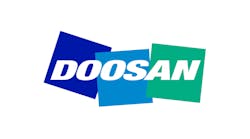This week the AMT – The Association For Manufacturing Technology issued what it called a Manufacturing Mandate, calling for “a comprehensive national strategy to revitalize manufacturing in the U.S. through cooperation and innovation.” The position outlined by the AMT addresses government-sponsored research programs, the availability of investment capital, U.S. trade policies, corporate tax rates, and workforce training — all issues that the manufacturing sector believe weaken their global competitiveness.
The AMT is a trade association for the U.S. machine tool industry. The group’s statement directly asks federal officials to establish a collaborative effort by the government, industrial groups, and the academic community “to incentivize innovation and research and development in new products and manufacturing technologies; assure the availability of capital; increase global competitiveness; minimize structural cost burdens; enhance collaboration between government, academia and industry; and build a better educated and trained ‘smartforce’.”
AMT president Douglas K. Woods decried the fact that the U.S. has maintained a trade deficit in advanced technology products since 2002, despite its standing as the world’s top manufacturing economy.
“We must take action that goes far beyond commissioning studies to ensure its revitalization and develop a model for future growth,” Woods declared. “Our Manufacturing Mandate provides a clear path and cohesive approach to promote real economic growth. We are poised to work with the government, industry and the academic community to create a central manufacturing policy structure within the Executive Branch to develop policy, focus research and coordinate implementation of The Manufacturing Mandate strategies.”
Woods emphasized the importance of a collaborative effort to institute the details of the Manufacturing Mandate. “The critical focus must be on incentivizing innovation,” he said. “Manufacturing innovation clusters are already in place across the country and are natural hot spots for advances in manufacturing technology to occur. This is where AMT believes it can have a positive impact by identifying those technologies that have been created for very specific applications, but have potential for broader use, then linking the manufacturing community with universities or government agencies to move those technologies forward.”
He continued, “We need a direct message and empowerment to move forward from a high level within our current administration. We can learn from excellent models — countries including Germany, Switzerland and China — where industry associations have successfully come together with educational institutions and divisions within the government comparable to our Departments of Defense, Transportation and Energy, to identify opportunities upon which industry can capitalize.”
The six points of AMT’s Manufacturing Mandate are:
1) Incentivize innovation and R&D in new products and manufacturing technologies by supporting reauthorization and full funding of the America COMPETES Act; improving the R&D tax credit and making it permanent, and funding and sustaining targeted growth technologies.
2) Assure availability of capital by revising SBA/government lending requirements for manufacturers that consider economic conditions; using the expanded DPA Title III lending authority to provide credit to defense-critical manufacturers; and providing incentives to banks making and maintaining capital loans to qualified manufacturers.
3) Improve global competitiveness by modernizing U.S. export control policy; strengthening intellectual property protection, and streamlining the business visa process with major trading partners.
4) Minimize structural cost burdens through lower business taxes and avoidance of any new tax increases on U.S. manufacturers; avoidance of excessive regulations; and encouragement of investment in new equipment and retooled plants.
5) Enhance collaboration between government, academia and industry by coordinating government support and utilization of the existing national network of Manufacturing Innovation Clusters; creating a standing Interagency Manufacturing Structure comprised of Cabinet officials, industry leaders and academics; and supporting and sponsoring targeted technology challenges.
6) Build a better educated and trained “smartforce” by developing a national manufacturing skills certification program, supporting grants, scholarships and/or incentives for Science Technology Engineering and Mathematics (STEM) degrees; and using Manufacturing Extension Partnerships (MEPs) as centers of manufacturing excellence to train and support local manufacturers.
The full text of AMT’s Manufacturing Mandate: Unleashing a Dynamic Innovation Economy is available online at AMT’s website.
“We are calling on members of Congress, candidates for office and community leaders to join us in supporting and publicly endorsing The Manufacturing Mandate and working tirelessly to develop and move forward with this national strategy,” said Woods.
